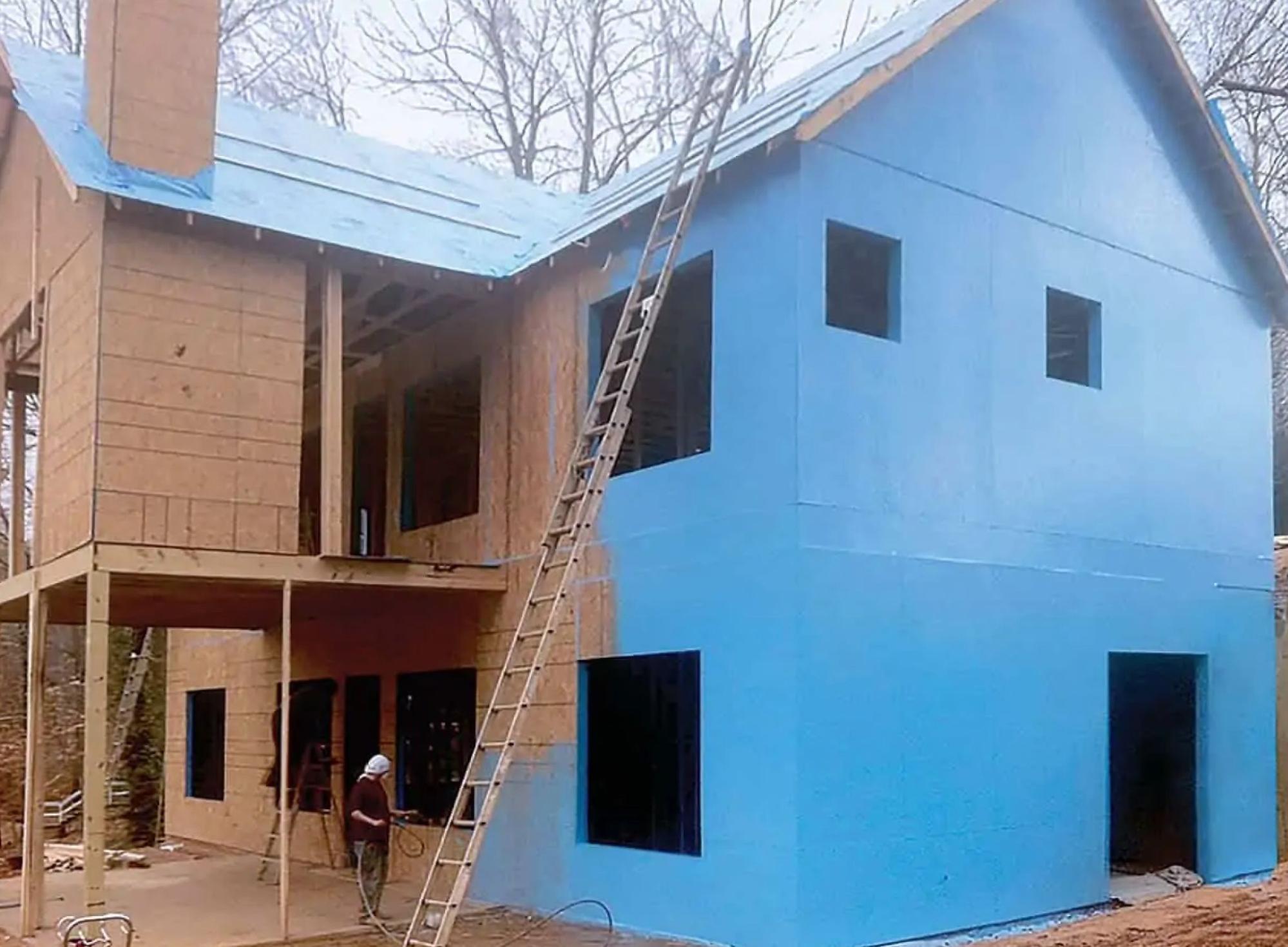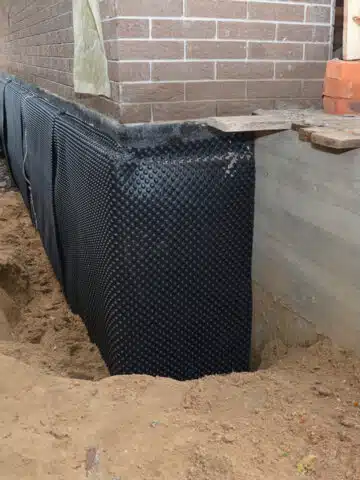Property manager's handbook to damp proofing newcastle solutions
Property manager's handbook to damp proofing newcastle solutions
Blog Article
Checking Out the Different Techniques and Solutions for Effective Damp Proofing
Wetness in structures poses substantial difficulties to both structural stability and interior air quality. Numerous methods and solutions have actually emerged to fight this pervasive issue. From conventional damp-proof membranes to cutting-edge chemical therapies, each approach supplies special benefits. Understanding these choices is necessary for reliable dampness control. Selecting the right remedy depends on specific building problems and demands, triggering further expedition into the most reliable moist proofing techniques offered.
Recognizing the Sources Of Moisture
Although dampness can emerge from different sources, comprehending these causes is crucial for effective removal. Generally, wetness stems from three primary resources: climbing damp, penetrating damp, and condensation. Climbing damp happens when groundwater travels up with porous materials, such as block or stone, commonly due to a lack of a reliable obstacle (damp removal newcastle). Permeating damp is commonly triggered by outside variables, consisting of roof leaks, damaged rain gutters, or harmed walls, permitting water to penetrate a home. Condensation, on the other hand, results from excess wetness airborne, usually intensified by bad ventilation and temperature distinctions, causing water beads basing on surface areas. Determining these underlying concerns is crucial, as each kind of wetness needs a customized strategy for remediation. Appropriate assessment assists in determining one of the most effective remedies, ultimately protecting the structural honesty of a building and enhancing interior air quality
Traditional Damp-Proof Membranes

Chemical Damp-Proofing Solutions
Chemical damp-proofing options provide an innovative technique to stop moisture intrusion in structures. These approaches commonly include the application of liquid chemicals that penetrate stonework and form an obstacle versus climbing damp. Typically utilized chemicals consist of silanes, siloxanes, and various other water-repellent representatives that respond with surface products to produce a hydrophobic layer.The application procedure normally needs drilling openings right into the walls, infusing the chemical remedy, and allowing it to heal. This approach is particularly beneficial for older structures where typical damp-proof membranes may be impractical. Chemical damp-proofing can be much less turbulent and much more cost-efficient than substantial improvement projects.While efficient, these options depend on proper application and ecological conditions for peak performance. damp removal newcastle. Routine upkeep and surveillance are important to assure the long life of the damp-proofing treatment. Overall, chemical damp-proofing represents a versatile choice for protecting structures against moisture-related damage
Dental Caries Wall Building Strategies
Cavity wall surface construction strategies use numerous advantages, particularly in wetness control and power performance. By including an air space in between 2 layers of stonework, these walls efficiently reduce water access while boosting insulation. This mix not only safeguards structures from dampness but also contributes to decreased energy consumption.
Advantages of Dental Caries Walls
When thinking about efficient wet proofing techniques, the advantages of cavity walls stand apart prominently. Cavity walls contain two different layers, creating an air space that efficiently lowers dampness penetration. This style lessens the threat of wetness, as the external wall acts as a barrier against rainfall and water ingress. Furthermore, dental caries walls improve thermal insulation, which contributes to power performance by lowering heat loss. They likewise provide sound insulation, assisting to develop a quieter interior setting. The air gap allows for ventilation, which assists in wetness control and reduces the chance of mold growth. These advantages not only enhance the total comfort of a structure but likewise add to its durability and structural integrity.
Dampness Control Strategies
Effective dampness control techniques are essential in tooth cavity wall building to guarantee long-lasting defense against dampness. One main method includes the unification of weep openings, which promote water drain from the tooth cavity, preventing buildup. Furthermore, using breathable membranes can help manage moisture levels while allowing entraped vapor to leave. Appropriate placement of insulation is likewise vital, as it needs to not obstruct drainage courses. Guaranteeing that the outer fallen leaves of the dental caries wall surface are created with water-resistant products improves general toughness. Routine maintenance checks are crucial to determine any kind of clogs or damage early, securing the framework's stability. Eventually, a mix of these techniques forms a robust defense versus wetness invasion in tooth cavity walls.
Insulation and Power Performance
Insulation plays an essential role in enhancing energy effectiveness within dental caries wall surface building. By incorporating protecting materials, these wall surfaces produce a thermal barrier that reduces warm loss and decreases energy usage. Efficient insulation not just assists preserve a steady indoor temperature yet also reduces the danger of dampness, as it avoids condensation within the wall cavity. Various strategies, such as the use of inflexible foam boards or mineral wool, can be used to accomplish perfect insulation performance. In addition, correct installation is vital to assure that spaces and voids are decreased, which can or else jeopardize energy performance. Inevitably, a well-insulated tooth cavity wall surface contributes considerably to general sustainability and reduces home heating and cooling prices for house owners.
Exterior Damp Proofing Techniques
Exterior damp proofing techniques are vital for safeguarding frameworks from moisture seepage. 2 effective techniques include the application of water resistant membrane layers and the installation of French drains. These solutions assist reduce water build-up and preserve the integrity of structures.
Waterproof Membrane Layer Application
While various approaches exist for stopping wetness ingress, the application of water resistant membrane layers stays a highly efficient external wet proofing technique. These membrane layers are normally made from materials such as polyethylene, rubber, or changed bitumen, providing a robust barrier versus water penetration. The installation process involves using the membrane layer to the outside surface areas of foundations or walls, ensuring total coverage to avoid leaks. Correct attachment and sealing at joints are essential to making the most of efficiency. Water-proof membranes can be applied in numerous types, consisting of liquid layers and sheet membrane layers, enabling flexibility based on the details needs of the structure. This technique not only shields buildings from wetness yet likewise improves their long life and structural integrity.
French Drainpipe Installation
One efficient technique for managing groundwater and protecting against wetness accumulation around a structure's foundation is the installment of a French drainpipe. This drain system contains a trench loaded with gravel and a perforated pipe that redirects surface area water far from the structure. Proper installation requires cautious preparation, making sure that the drain inclines away from the framework to promote ideal water flow. In addition, the place of the drain is important; it must be positioned in areas susceptible to pooling or excess moisture. Regular upkeep, including clearing up particles from the gravel and making sure the pipe remains unhampered, is essential for long-lasting efficiency. Ultimately, a well-installed French drainpipe can substantially lower the danger of water-related issues in basements and foundations.
Inside Waterproofing Methods
Inside waterproofing techniques are essential for securing a structure's interior from dampness seepage and potential water damages. These methods typically entail the application of specific products and strategies developed to develop a dampness obstacle within the structure. One usual technique is making use of waterproof finishings or sealers on wall surfaces and floorings, which prevent moisture from penetrating surfaces.Additionally, installing indoor water drainage systems, such as sump pumps, can successfully manage water buildup in cellars get more info and crawl areas. An additional technique entails the usage of vapor barriers, which are set up to hinder dampness movement from the ground into living spaces.Moreover, addressing any kind of fractures or gaps in wall surfaces or structures with appropriate sealants guarantees a complete protection against water breach. By executing these indoor waterproofing strategies, homeowner can considerably minimize the risk of mold and mildew development, architectural damage, and other moisture-related concerns. Correct implementation of these methods is necessary for lasting security and structure integrity.
Regular Maintenance and Examination Practices
Normal upkeep and examination practices are crucial for guaranteeing the long-lasting performance of moist proofing services in any structure. Regular checks enable home owners to determine very early indicators of wetness invasion, such as peeling paint, mold and mildew development, and mildewy smells. These indicators can signify underlying issues that call for immediate attention.Inspections should be performed at least each year, concentrating on susceptible locations like cellars, creep areas, and exterior wall surfaces. During these assessments, homeowner ought to analyze sealants, water drainage systems, and ventilation to verify they operate correctly.Additionally, preserving downspouts and rain gutters is crucial, as blocked systems can cause water accumulation near the foundation. Implementing a normal upkeep timetable, together with timely repairs, can significantly prolong the life expectancy of wet proofing procedures and safeguard the structural honesty of the structure. Positive steps eventually add to the total health and wellness of the living setting.
Often Asked Concerns
The Length Of Time Does Damp Proofing Typically Last?
The period of damp proofing effectiveness differs, typically lasting between 20 to 50 years. Aspects such as application top quality, environmental problems, and upkeep techniques substantially influence the durability of the damp proofing treatment.

Can I Damp Evidence My Home Myself?
The individual considered the usefulness of do it yourself damp proofing. With correct study and the right materials, it is feasible. However, they also acknowledged the significance of specialist advice to assure lasting performance and stop future problems.
What Are the Signs of Inadequate Damp Proofing?
Signs of inadequate wet proofing include relentless moldy smells, noticeable mold development, peeling off paint, damp patches on wall surfaces, and wood degeneration - mould removal newcastle. Homeowners must attend to these concerns without delay to stop further damage and health and wellness concerns
Does Damp Proofing Affect Indoor Air Quality?

Exactly How Much Does Specialist Damp Proofing Price?
Specialist damp proofing costs vary significantly, usually varying from $1,000 to $5,000 depending upon the property's dimension, the extent of the damp problem, and selected approaches. Each scenario requires a customized evaluation for accurate pricing. Commonly, dampness originates from 3 main resources: rising moist, penetrating damp, and condensation. When considering effective wet proofing techniques, the advantages of cavity wall surfaces stand out prominently. Exterior wet proofing techniques are essential for safeguarding structures from wetness seepage. While numerous techniques exist for preventing moisture access, the application of water resistant membranes remains a highly effective outside damp proofing strategy. Indications of inadequate damp proofing consist of consistent mildewy smells, noticeable mold and mildew growth, peeling off paint, damp patches on walls, and wood decay.
Report this page